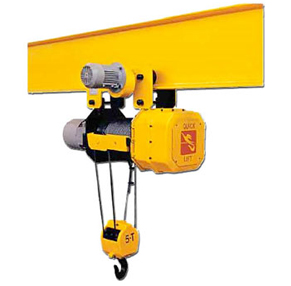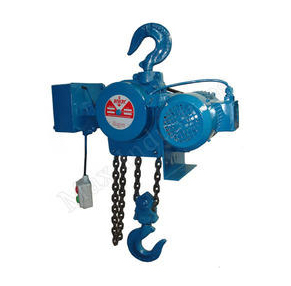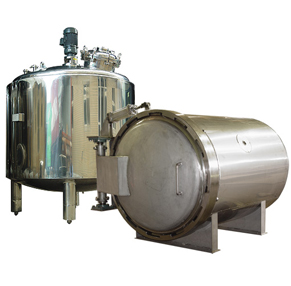We are approved as a “Competent Person” under The Factories Act, 1948 and The Maharashtra Factories Rules, 1963 by The Directorate of Industrial safety and Health (DISH), Government of Maharashtra.
We are authorised for carrying out all the Examinations/Tests and Certification as prescribed in The Factories Act and The Maharashtra Factories Rules on the following equipments in a Factory:
- All types of Pressure Vessels/Plants
- All types of Goods Lifts
- All types of Lifting Machines
- All types of Lifting Tackles, Chains, Ropes, Winch, etc;
Lifts & Hoists (Section 28, Rule 62)
 In every factory every hoist and lift shall be of good mechanical construction, sound material and adequate strength; properly maintained, and shall be thoroughly examined by a Competent Person at least once in every period of six months, and a register shall be kept containing the prescribed particulars of every such examination.
In every factory every hoist and lift shall be of good mechanical construction, sound material and adequate strength; properly maintained, and shall be thoroughly examined by a Competent Person at least once in every period of six months, and a register shall be kept containing the prescribed particulars of every such examination.
Every hoistway and liftway shall be sufficiently protected by an enclosure fitted with gates, and the hoist or lift and every such enclosure shall be so constructed as to prevent any person or thing from being trapped between any part of the hoist or lift and any fixed structure or moving part.
The maximum safe working load shall be plainly marked on every hoist or lift, and no load greater than such load shall be carried thereon.
The cage of every Hoist or Lift used for carrying persons shall be fitted with a gate on each side from which the access is afforded to a landing.
If the cage is suppoerted by rope or chain, there should be atleast two ropes or chains which are connected seperately with the cage and balance weight. In this case, each rope or chain that is used should have the capacity to withstand the maximun load carrying capacity of the hoist or lift.
Proper and efficient device should be installed and maintained properly which have the capability of supporting the cage at its maximun load in the event of breakage of ropes, chains or any other attachments.
Proper and efficient automatic device should be installed and maintained properly to prevent the cage from over-running.
The Hoists or Lifts are examined/tested to verify the compliance of all above directives and a Certificate in FORM 11 is issued by us.
FREQUENCY OF EXAMINATION: ONCE IN SIX MONTHS
Lifting Machines, Chains, Ropes, Lifting Tackles (Section 29, Rule 64)
 In any factory the following provisions shall be complied with in respect of every lifting machine (other than a hoist and lift) and every chain, rope and lifting tackle that is used for raising or lowering persons, goods or materials, all parts, including the working gear, whether fixed or movable, of every lifting machine and every chain, rope or lifting tackle shall be of good construction, sound material and adequate strength and free from defects; properly maintained; and thoroughly examined by a competent person at least once in every period of twelve months and a register shall be kept containing the prescribed particulars of every such examination.
In any factory the following provisions shall be complied with in respect of every lifting machine (other than a hoist and lift) and every chain, rope and lifting tackle that is used for raising or lowering persons, goods or materials, all parts, including the working gear, whether fixed or movable, of every lifting machine and every chain, rope or lifting tackle shall be of good construction, sound material and adequate strength and free from defects; properly maintained; and thoroughly examined by a competent person at least once in every period of twelve months and a register shall be kept containing the prescribed particulars of every such examination.
No lifting machine and no chain, rope or lifting tackle shall, except for the purpose of test, be loaded beyond the safe working load which shall be plainly marked thereon together with an identification mark and duly entered in the prescribed register; and where this is not practicable, a table showing the safe working loads of every kind and size of lifting machine or chain, rope or lifting tackle in use shall be displayed in prominent positions on the premises.
The Lifting Machines, Chains, Ropes, Lifting Tackles are examined/tested to verify the compliance of all above directives and a Certificate in FORM 11 is issued by us.
FREQUENCY OF EXAMINATION: ONCE IN TWELVE MONTHS
Pressure Vessels & Plants (Section 31, Rule 65)
 If in any factory, any plant or machinery or any part thereof is operated at a pressure above atmospheric pressure, effective measures shall be taken to ensure that the safe working pressure of such plant or machinery or part is not exceeded.
If in any factory, any plant or machinery or any part thereof is operated at a pressure above atmospheric pressure, effective measures shall be taken to ensure that the safe working pressure of such plant or machinery or part is not exceeded.
Every Pressure Vessel/Plant shall be properly designed and should be of sound construction using sound engineering practice. It should always be maintained in a safe working condition.
Every pressure Vessel/Plant should be fitted with:
- A suitable Safety valve coveniently located so as to ensure that the maximum safe working pressure of the vessel shall never be exceeded.
- A suitable Pressure gauge with the dial range of not less than 1.5 times and not more than 2 times the maximun safe working pressure, easily visible at all times, showing correct internal pressure in KG./SQ.CM. and prominently marked with RED mark at the maximum safe working pressure of the Vessel/Plant.
- A suitable Stop valve to isolate the Pressure vessel/Plant from other vessels or any other source of supply of pressure.
- A suitable arrangement for attaching a test pressure gauge for checking the accuracy of the Pressure Gauge fitted on the Vessel/Plant.
- A suitable drain valve at the lowest portion of the of the Vessel/plant for proper draing the liquid that may be collected in the Pressure Vessel.
- The pressure Gauge, valves should be mounted at a height not more than 1.5 metres from the working level.
- A suitable Reducing Valve or any other such automatic device to prevent the safe working pressure to be exceeded.
- A suitable device should be fixed in case of a jacketted vessel to control the heat input as not to allow the safe working pressure of the Vessel/Plant being exceeded.
- An additional safety valve to protect the Vessel/Plant in the event of the failure of reducing valve.
The Pressure Vessels/Plants are examined/tested to verify the compliance of all above directives and a certificate in FORM 13 is issued by us.
The frequency of examination is as follows:
- External examination: once in six months
- Internal examination: once in twelve months
- Hydraulic testing: once in four years.
- In case due to any reason, the internal examination is not practically possible to carry out, the the hydraulic testing is carried out once in two years
In addition to all the above, we also provide the services of
- SAFETY AUDIT
- HAZOP STUDY
- ON-SITE EMERGENCY PLAN
- ILLUMINATION STUDY
- SOUND STUDY
